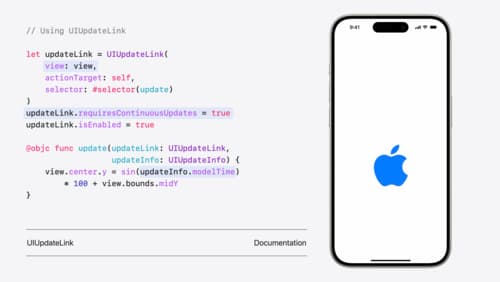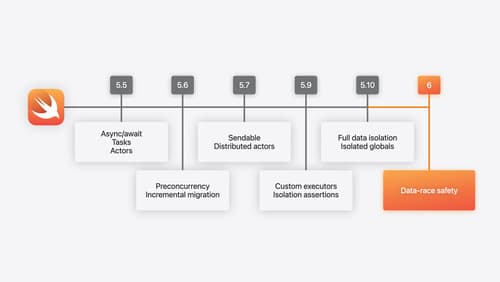What's new in Swift in iOS 18?
Asked on 2024-07-30
1 search
In iOS 18, there are several notable updates and improvements to Swift:
-
Swift 6 Language Mode: This new language mode is opt-in, allowing developers to take advantage of new features and improvements at their own pace. It includes enhancements for compile-time checking and data-race safety. For more details, you can watch the session What’s new in Swift (17:03).
-
Concurrency Model: Swift continues to refine its concurrency model, which includes async/await, actors, and structured concurrency. These features help in building safer and more efficient code.
-
Interoperability: There have been significant improvements in the interoperability between Swift and other languages, including C and C++. This makes it easier to integrate Swift into existing projects that use these languages.
-
SwiftUI Enhancements: SwiftUI has gained new features such as custom containers, mesh gradients, and scrolling customizations. These improvements make it easier to build complex user interfaces with less code. For more details, you can watch the session What’s new in SwiftUI (18:01).
-
Swift Testing APIs: New testing APIs designed for Swift are now available, making it easier to write and maintain tests for your applications.
-
Swift Data: This lightweight API helps in modeling and persisting app information, making it easier to define your schema with just a few additions to a normal Swift class.
For a comprehensive overview of these updates, you can refer to the session What’s new in Swift (0:07).

What’s new in UIKit
Explore everything new in UIKit, including tab and document launch experiences, transitions, and text and input changes. We’ll also discuss better-than-ever interoperability between UIKit and SwiftUI animations and gestures, as well as general improvements throughout UIKit.

Platforms State of the Union
Discover the newest advancements on Apple platforms.

What’s new in Swift
Join us for an update on Swift. We’ll briefly go through a history of Swift over the past decade, and show you how the community has grown through workgroups, expanded the package ecosystem, and increased platform support. We’ll introduce you to a new language mode that achieves data-race safety by default, and a language subset that lets you run Swift on highly constrained systems. We’ll also explore some language updates including noncopyable types, typed throws, and improved C++ interoperability.
